Affiliate links on Android Authority may earn us a commission. Learn more.
Android Everywhere: 10 Types of Devices That Android Is Making Better
Published onFebruary 26, 2012

I am talking about something bigger and way more exciting. Something like a pair of HUD glasses, an intelligent washing machine, a smart mirror, or even a connected car. What if Android could breathe life in all the “dumb” objects that we use every day, to make them smarter and more useful? On smartphones and tablets, Android makes our lives better already. Just imagine what impact it could have in a world of smart devices, all connected to each other.
Android everywhere is not the stuff of sci-fi. It’s happening right now. Sooner that you think, Android may take over the world. Here’s a list of amazing objects, from wristwatches to cars, that already run Android. If you think that we missed something, give us a shout.
1. Watches
Most little boys (and plenty of grown-up ones) dream about having Dick Tracy’s watch. And why wouldn’t they? What’s more awesome than to have a smart gadget on your wrist? The first modern smart watches were repurposed iPod Nanos, but as usual, Android took the concept to the next level. From Swiss-made luxury pieces to rugged wristband-mounted computers that happen to show the time, Android is coming to a watch near you.
The MOTO ACTV is so advanced that Motorola doesn’t even call it a watch. The “fitness device” incorporates a GPS tracker, MP3 player, and heart rate monitor. Here are a few specs:
- 1.6-inch screen protected by Gorilla Glass
- 600MHz TI OMAP processor
- 256 MB RAM
- 8GB or 16GB of storage
- FM radio, Bluetooth, Wi-Fi
- Weight: 35g
It wasn’t long before someone rooted the MOTO ACTV and installed Honeycomb on it. So, if you really want to, you can play Angry Birds or watch YouTube videos on it. How’s that for a “watch”?
Here’s another example, from Wimm Labs:
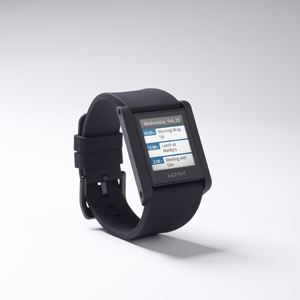
Wimm Labs sells tiny Android devices, about the size of postal stamp, which can be mounted as watches, on bike clips, on pendants, and even on keychains. In fact, there are few places where you can’t put them. The company’s flagship product is the Wimm One, “a wrist-based companion for people who desire more control over their smart devices and notifications”. In other words, you can pair your watch with your Android smartphone to get messages and notifications on your wrist. You can even install apps on it.
2. Smart glasses
Google has an awesome new product in the pipeline, a pair of smart glasses, reportedly coming later this year. For now, all we have is rumors, but that’s enough to get an idea about how will these ground-breaking glasses will work. What we know so far:
- Heads Up Display (HUD) – the image will be imposed on your field of view
- GPS tracker included
- Controllable with head tilts and voice commands
- Integrated with Google Maps, Goggles, Latitude, and other services
- Running Android
- Video camera included
- Processor, RAM, and storage that are similar to a smartphone’s
- Cost: $250-$600
The Google glasses will turn the dream of countless sci-fi scriptwriters into reality. Finally, true augmented reality becomes accessible. And you won’t look like a total dork wearing them, because they’ll purportedly look something like this:
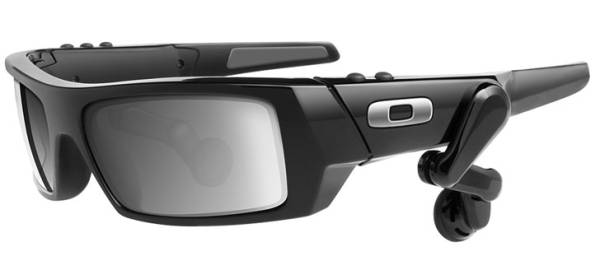
Speaking of Android smart glasses, you can already trick out your ski goggles with Mod Live, a tiny Android-powered HUD that displays coordinates, altitude, or temperature, on a tiny screen mounted on the goggles.
3. Home Appliances
I think we all agree that washing machines and fridges are really not that exciting. Perhaps, a touch of Android could make them more interesting?
Smart appliances running Android are already here. Samsung and LG (who else) have a few interesting products available, including a fridge with a built-in touchscreen display running Android or a washing machine that can connect to your smartphone and tell you how long you have to wait for the washing cycle to end. Besides the obvious apps (cooking recipes, food inventory, dieting, remote control), these smart appliances can also connect to the net, so you can read your mail or check out your Twitter feed before grabbing your milk.

Although not as spectacular as other devices on this list, smart home appliances running Android have the potential to massively improve our lives. Let’s face it – our world moves forward thanks to modern technology. Why would we neglect home appliances?
4. Cars
Speaking of moving forward, carmakers have long been criticized for not updating in-car technology for the 21th century. But slowly, things are changing.
A number of automakers, upstream suppliers, and aftermarket providers have created Android-based infotainment systems. One of the best efforts belongs to struggling Swedish automaker Saab (formerly owned by GM). Saab’s iQon includes all the tricks you would expect from an infotainment system, plus a voice controlled navigation system, a full-fledged browser, and an app store. Moreover, iQon has access to the internal sensors of the car, which are made available to developers via an API.
Unfortunately, Saab doesn’t have the level of clout required to make in-car Android known to millions of drivers. But do you know who has it? Ford.
Just like Saab, Ford has worked to make it easy for developers to create apps that can access the inner sensors of a car (don’t worry, they won’t be able to brick your car). Ford’s OpenXC project combines Android with the Arduino open source hardware platform to tackle the problem posed by building short lifespan technology (Android is barely three years old) into a product that is designed to be used for 15 years or longer. With an OpenXC module installed on your car, any Android app will be able to access sensor information (speed, position, gas level, even steering wheel angle) and do all sorts of interesting things with them. From mapping your itinerary on your Android smartphone to making driving recommendations based on your driving style, the horizon is wide open.
5. Homes
Home automation systems (HAS) have been around for a while. Costing from $5000 for a basic system to $300,000 for the more extravagant setups, automation systems are increasingly popular, especially for newly built homes. Typical systems control heating and cooling, lighting, and alarms, but there is little you can’t automate in a home – appliances, sprinklers, pools, home theaters, etc.
Current HAS rely heavily on proprietary wireless protocols and expensive hardware. Announced last year, Google’s Android @ Home platform promise to offer a different way to implement home automation. By pairing an Android device with an Arduino module (a cheap, open source microcontroller), Android @ Home will make it easy for developers to automate things like light bulbs and door locks.
We can only imagine a future in which you ask your home to prepare your bath or to update you on the latest news. Android @ Home will make it possible.
6. Cameras
Some may argue that the 8 MP camera of a Samsung Galaxy S2 is better than many point-and-shoot cameras out there. But that won’t stop camera manufacturers like Polaroid from adding Android to their offerings.
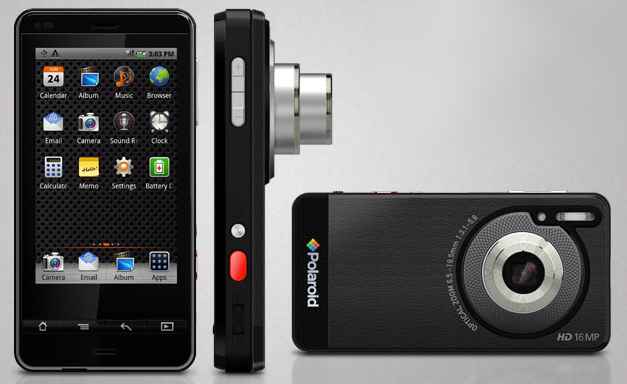
Polaroid’s SC1630 smart camera is a hybrid between an Android phone and a point-and-shoot. In fact, when you look at the device from the rear, it’s easy to mistake it for a “regular” smartphone. Well, if you can make abstraction of the 3X optical zoom module. Here are some specs:
- 850/1900/2100MHz WCDMA and 850/900/1800/1900 GSM radio
- WiFi, Bluetooth, GPS, FM radio
- 512 MB RAM
- 512 MB built-in storage, expandable to 32 GB via SD
- 800X400 3.2-inch touchscreen
- 16 MP sensor, F3.1-F5.6 aperture, 3X optical and 5X digital zoom
7. Smart TVs
Making television smarter is a hot trend this year, and Android is, for many manufacturers, the smart TV operating system of choice. Smart TVs connect to the Internet and can run apps, have built-in webcams for Skyping, and can connect wirelessly to your laptop, tablet, or smartphone. Just consider them really big computers that you can operate with a remote control.
One of the hottest smart TVs of the moment is Lenovo’s first foray into the TV business, the 55-inch K91 smart TV, running Android 4.0. Showcased at CES in January, Lenovo’s device truly deserves its “smart TV” moniker. Why? Let’s see:
- Powered by a dual-core Snapdragon processor
- Over 100 apps pre-installed, with more available via Lenovo’s Appstore.
- 5-MP camera for video-chatting
- Face-recognition that enables easy parental locking
- On-Demand Video service
- Voice-controlled remote control with built-in touchpad
- 8GB of built-in storage space
8. DECT phones
If you’re tablet and smartphone are not enough to feed your Android addiction, maybe you can get your fix with the $169 Archos 35 Smart Home Phone. The gadget can pair with your Android smartphone to sync contacts and apps, which you will be able to run on the “handset”. Other nifty features are the video chat app, the email access, and built-in web browser.
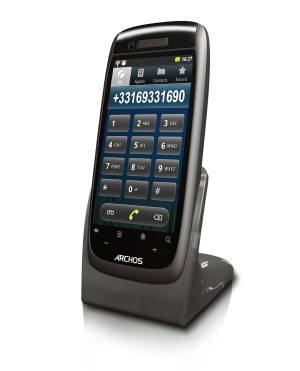
The Archos 35 brings the DECT phone right into the mobile age. Who knows, smart DECT phones might even slow down the landlines’ inevitable drift into obsolescence.
9. Game consoles
For most of us, our Android smartphone is our gaming device. However, you can get a real portable gaming console that runs on Android 2.2 and plays just about any game. How’s that possible? Well, the JXD S7100 gaming tablet (coming at you straight from Shenzhen, China) includes an emulator that lets you play classic titles, such as Mario Kart 64, King of Fighters ’97, or Tomb Raider. Just don’t ask about the copyright, though…
The exterior design of the JXD S7100 looks like a PSP clone with a touch of Apple, but the guts of the device are downright impressive:
- 7-inch touchscreen display, with 800X480 resolution
- Dual-core Cortex A-9 processor
- Mali 400 graphics
- 512MB of RAM
- 2MP rear camera, 0.3 MP front camera
- 16GB of internal storage
- 1080p HDMI-out
- Android 2.2
Another player (see what I did there?) in the Android game console arena will be the EVO 2 from Envizions, slated for a 2012 release. The EVO 2 will be the first “full-sized” console to run Android, the 2.2 version to be precise. The console will have full access to the Android Market. Unfortunately, the EVO 2 was repeatedly delayed, so we can’t tell you precisely when (if ever) you will be able to give it a spin.
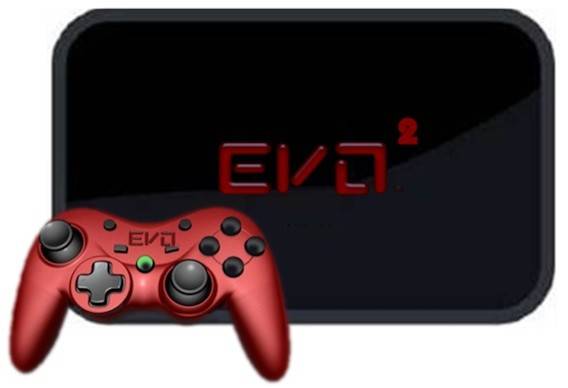
10. Mirrors (you read that right)
Have you ever dreamt of checking your Facebook status while brushing your teeth in the morning? What, you haven’t? Anyway, the Cybertecture smart mirror will let you do just that. Seeing it in action, you can’t help thinking that it’s the future. Basically, the gadget is an interactive display running Android, which happens to double as a mirror. You can check your Facebook status, read the news, even emails, all from your bathroom.
The smart mirror comes with a smart (of course) scale to monitor your weight and body fat index, which you can see on the mirror, along with some neat graphs that show how your diet is working. Somehow disappointingly, the Cybertecture is controlled with a remote control, and not through touch. Even more disappointingly, it will set you back a cool $7700.
Which Android Devices Do You Like the Most?
Wow, that was quite a ride. Android is already built in a variety of devices, and, as we speak, more and more companies and individuals are working to add it to more aspects of our lives.
Which unconventional Android devices do you like the most? What are you most excited about? Did we miss something? Let us know.